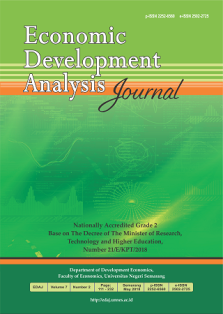Family Hope Program Evaluation in Poverty Alleviation: Benefit Incidence Analysis
Abstract
This research was conducted in the Cigalontang Sub-district, Tasikmalaya Regency, West Java
Province. This study aims to analyze: (1) the accuracy of the Family Hope Program in achieving
its goals, (2) the characteristics of the Family Hope Program policies in poverty alleviation (pro-
poor, progressive, or regressive), (3) the effectiveness of the Family Hope Program implementation.
The number of respondents consisted of 195 Beneficiary Families of the Family Hope Program .
This study uses primary data, which were collected using interview and questionnaire methods. This
study uses analysis methods in the form of Proportion Analysis, Benefit Incidence Analysis, and
Appraisal Effectiveness Program. Based on the results of the study, it can be concluded that : (1)
The pattern of the Family Hope Program acceptance in the Cigalontang Sub-district is right on
target. Because the proportion of the population with income below the poverty line per capita
receives the most benefits from the Family Hope Program according to the target, namely, very-
poor households. (2) The Family Hope Program in the Cigalontang Sub-district is Pro-Poor, (3)
The Family Hope Program in the Cigalontang Sub-district is classified as an effective program.


